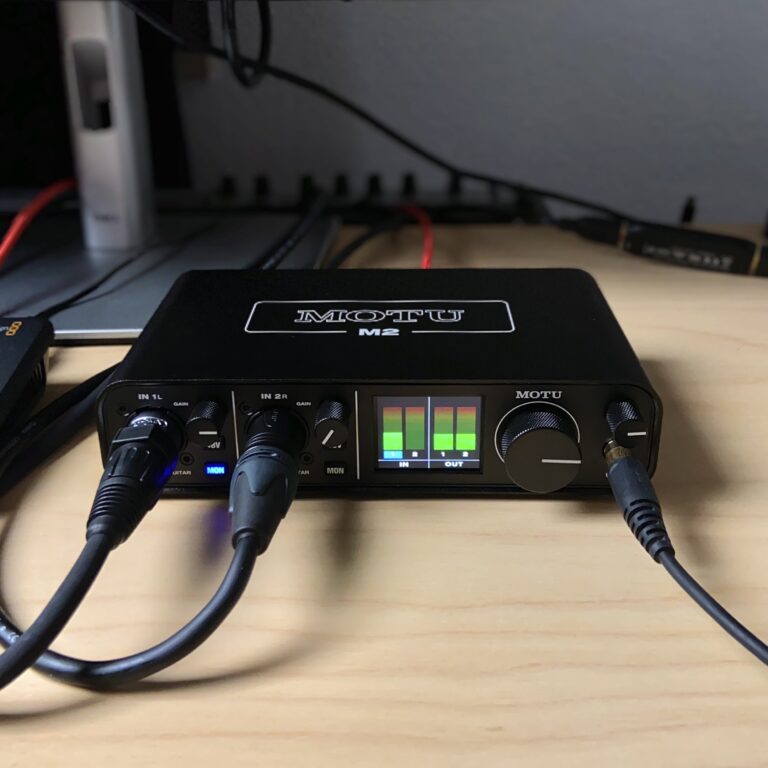Today, I turned 41. It was a wonderful, relaxed day with my family – and my parents’ dog who is a bit of a maniac… 😅
I also got to try out my two “office” birthday presents: a new microphone for voice, the Røde Procaster, and an audio interface, the MOTU M2.
The Røde Procaster is a dynamic microphone that was primarily designed for spoken word. Unfortunately, my office in the attic is much noisier than I had hoped, because there is a street with a bit of traffic outside. So while my default workshop XLR microphone, boomed out of frame, is great when you are running a more lively session and you don’t want a boom arm in your face, it still picks up a lot of ambient noise like traffic or playing kids. That’s why I needed a dynamic microphone, which, by nature of it’s design and the resulting “cardioid polar pattern”, will pick up much less ambient noise and allows me to first and foremost record what’s being said right in front of the microphone.
Choosing a microphone turned out to be much harder than expected. I wanted something that would be sufficient for occasional podcast visits (for now) or to record the voiceover track for tutorial videos I sometimes do for clients. After countless hours of watching reviews on YouTube, two microphones made it to the finals: the legendary Shure SM7B and the Røde Procaster. The Shure definitely seems to be the better and more popular microphone overall, but it comes with a hefty price tag of about 380–400 Euro (or Dollars). I know that this is not what audio engineers would call an expensive microphone, but it is a lot if you don’t want to use the mic that often. The Røde Procaster, which comes in at around 180 Euro, is a much more budget-friendly option that received a lot of favorable reviews. It is susceptible to handling noise and p-p-p-plosive sounds, but when it comes to the audio quality, it outperforms both microphones that are a little bit cheaper (Røde Podmic) and a bit pricier (Shure MV7X). It also does a really good job at rejecting noise. So I ultimately decided to give it a try and see for myself. With the nice side effect that I got a microphone and an audio interface for the price of an SM7B.


The MOTU M2 is an audio interface that lets you connect two inputs, like XLR microphones, for example. It comes with really good preamps with very low self noise and up to 60 db of gain to boost the signal of your microphone. Dynamic microphones like the Shure SM7B or the Røde Procaster are quiet microphones that need a lot of additional boost. The M2 can drive both of them without an additional signal booster like a Cloudlifter or a Fethead. And what’s just fabulous is that the M2 has a little color LCD display with level meters for inputs and outputs, so you can immediately see when your signal is too low or clipping. And they’re fun to watch, too, of course.
I’m really looking forward to using these two devices in my setup this year. What are you using to record audio and what is your favorite microphone? Looking forward to your answer – in a blog post maybe?
~
